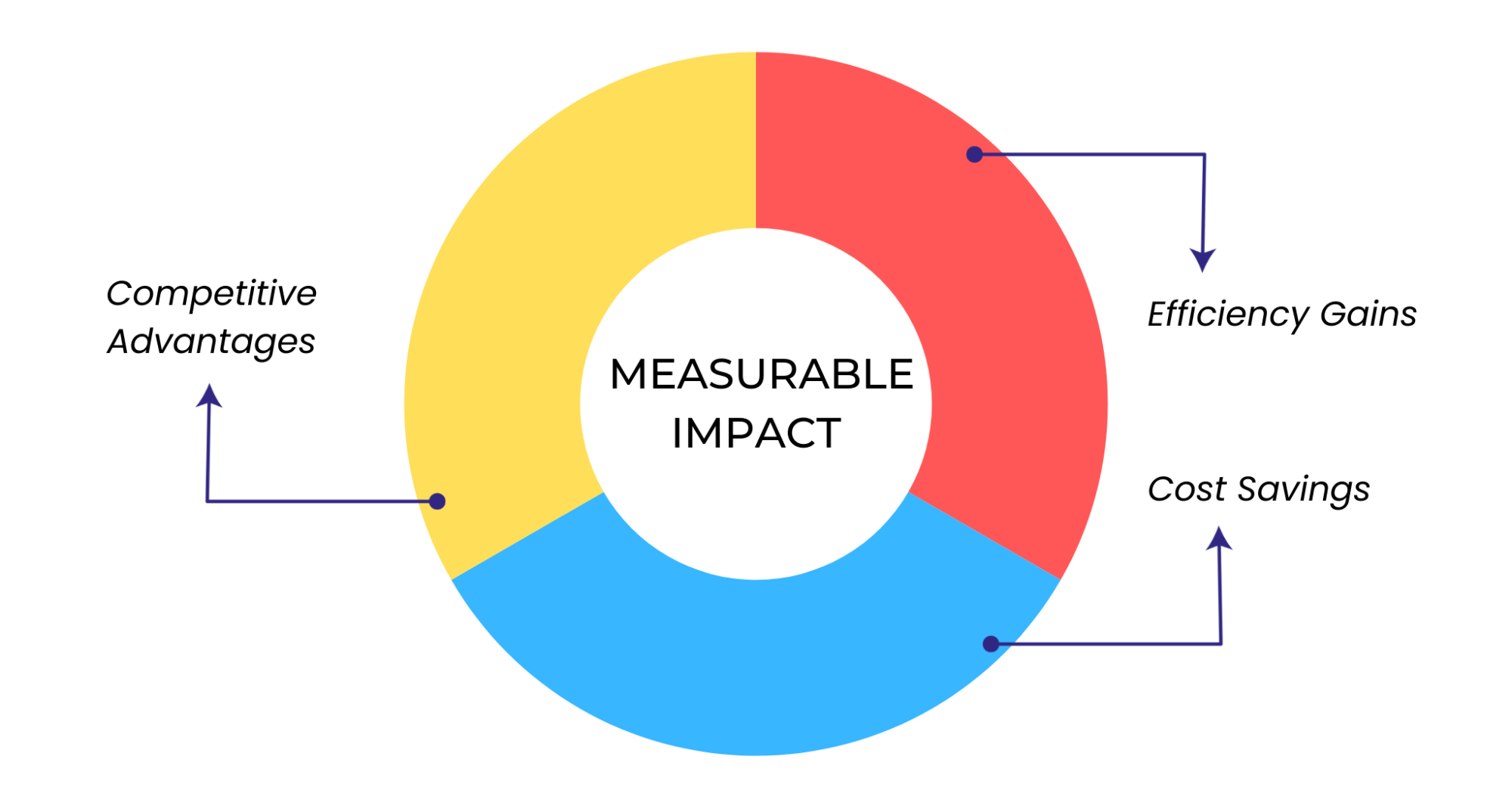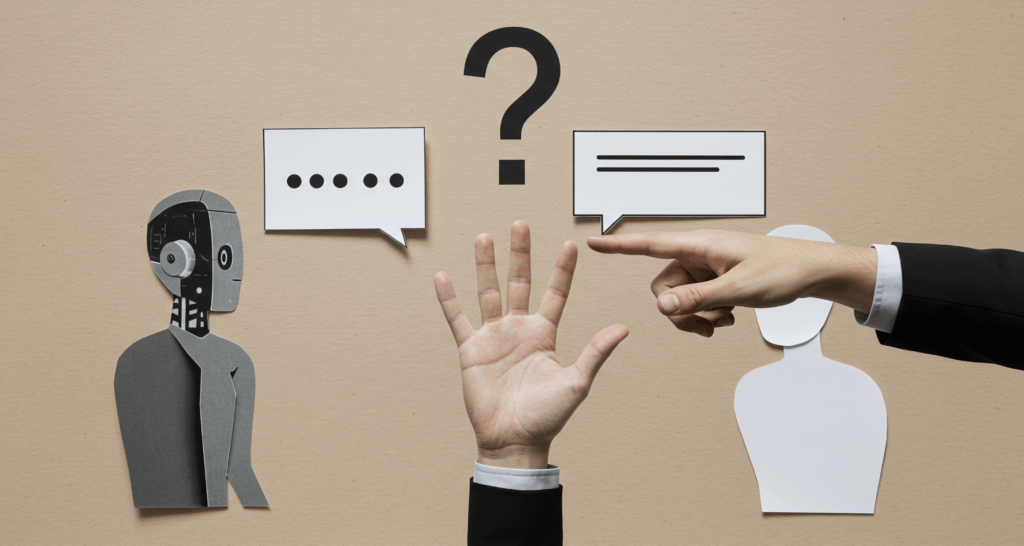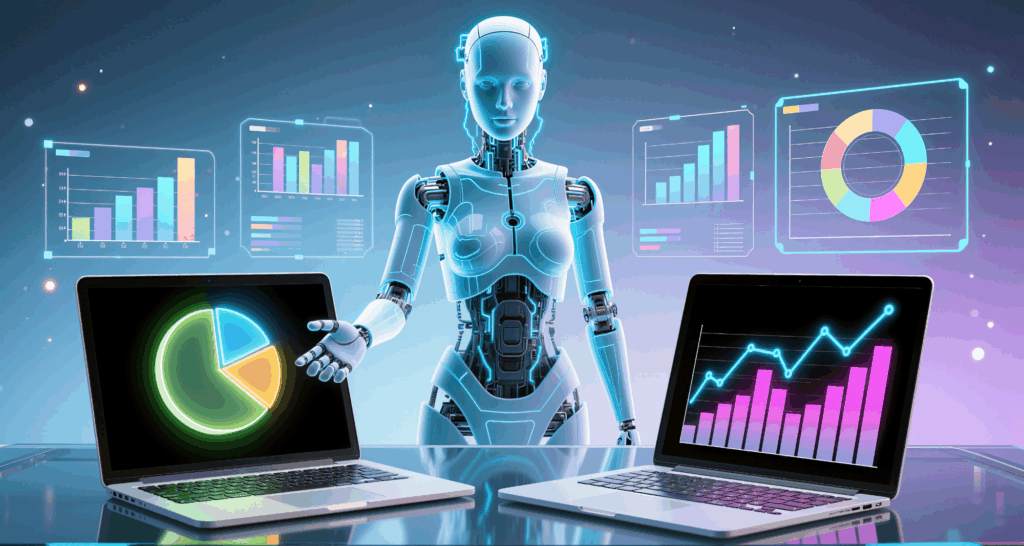How to Define Measurable Impact in a Content-Driven World
Ever wondered why some content performs far better than others? It’s not just about quality or creativity—it’s about nailing the true measurable value of your efforts. Are we driving real results? Are our actions syncing with our business goals? These are the questions that keep content marketers up at night.
In the past, measuring the true return on investment (ROI) of content strategy—the time, resources, and budget you pour into it—was a major challenge. But with the rise of artificial intelligence (AI), a new era of automated content intelligence and measurable impact measurement has dawned.
The AI revolution is about more than just producing more content; it’s about providing marketers with strong tools for creating smarter, higher-performing content that can be measured using effective analytics. And the impact? It goes way beyond those basic surface metrics.
We’re talking cold, hard numbers that reveal efficiency gains, cost savings, revenue attribution, and operational advantages. This redefines what it means to understand the measurable impact of content. AI has been a game-changer, offering a level of insight we couldn’t have dreamed of before.
Defining Measurable Content Impact in an AI-Powered World
When we talk about measurable content impact, we’re really getting into how your content efforts push those key business metrics and objectives. With AI in the mix, this definition gets a serious upgrade.

Think about cost savings. AI can handle content creation, image generation, research, and more, slashing costs like a pro. These savings? Yep, they’re a measurable impact on their own.
Then there are the efficiency gains. AI isn’t just about speeding things up—it’s like giving your productivity a turbo boost. Automating tasks like writing, email creation, and translation frees up your team to focus on bigger, more impactful projects.
And let’s not forget competitive advantages. With AI-powered personalization, content intelligence, and advanced predictive analytics, you’re not just keeping up; you’re staying ahead of the game. These tools give you new ways to drive measurable impact that goes beyond the old-school metrics.
Traditional engagement and conversion metrics? They’re not enough anymore. To really get a handle on measurable impact in an AI-driven world, you need tools designed to track those tangible cost savings, productivity boosts, and competitive edges AI brings to the table.
The AI Tools Revolutionizing How We Measure Impact
Now that we’ve unpacked the power of AI in measuring content impact, let’s get down to the AI tools that are revolutionizing this game. These cutting-edge technologies are changing the way how we track and analyze content performance, and they’re transforming the content marketing landscape. Let’s dive into some specific examples of these AI tools and see the measurable impact they can deliver:

Blog Writing
Before: Crafting a compelling 1000-word blog post could easily take 2-3 hours of your precious time.
With AI: Imagine generating a solid first draft in just 5-7 minutes! This slashes writing time by a massive 2 hours and 53 minutes per post. Think of the possibilities! Now, you can focus on refining your content, conducting in-depth research, or tackling other strategic initiatives. Plus, at a typical freelance writer’s rate of $50/hour, this AI-powered efficiency saves you about $142.50 per article. It’s a win-win for both content quality and your budget.
My Go-To Tool: ChatGPT 4.0
Email Drafting
Before: Drafting personalized emails might require a tedious 15-30 minutes each.
With AI: ChatGPT can whip up custom email drafts in just 1-5 minutes, saving a whopping 25 minutes per email! Imagine the impact on a business sending out 100 custom emails a week. That’s over 40 hours saved each month, leading to significant cost savings at an average marketing specialist’s hourly rate.
My Tool of Choice: ChatGPT 4.0
Image Generation
Before: Licensing stock photos or hiring designers could cost a hefty $10-$500 per image.
With AI: Image generators like Midjourney, Ideogram, and Dall-E offer unlimited image creation for a fraction of the cost – think $60-$80 a month! And with bulk generation, the price gets even sweeter. Such savings can amount to thousands of dollars annually on visuals, especially for content-heavy projects.
My Top Picks: Midjourney, Ideogram, and Dall-E
Content Rewriting
Before: Manually rewriting an article for better flow or clarity could take a frustrating 1-2 hours.
With AI: It can generate a fresh perspective in just 2-7 minutes! This saves over an hour of writing time per article, freeing you to refine multiple pieces without sacrificing valuable time. At a freelance writer’s rate of $50/hour, that’s a potential cost savings of around $93.75 per rewrite. This efficiency allows you to focus on strategic revisions and ensures a consistent flow of high-quality content.
My Preferred Tool: ChatGPT 4.0
Social Media Content Creation
Before: Juggling content creation for multiple social media platforms could easily consume 1-2 hours daily.
With AI: Tools like ChatGPT can help you schedule and personalize engaging social media posts in just 15-30 minutes. With this efficiency, you save up to 1.5 hours daily, leading to a significant reduction in workload over time. Think about the possibilities! You can use this saved time to analyze social media performance, interact with followers, or develop winning social media strategies.
My Powerhouse Duo: ChatGPT 4.0 & Canva
SEO Content Optimization
Before: Keyword research and SEO optimization used to be a time-consuming process, taking 1-2 hours per article.
With AI: It can analyze your content and suggest relevant keywords in just 10-20 minutes. You gain a time saving of up to 1.5 hours per piece, freeing you to focus on crafting high-quality content that ranks well in search engines. Considering the average SEO specialist rate of $75/hour, using AI for keyword research could save you over $100 per article!
My Favorite Tool: ChatGPT 4.0
Personalized Content Creation
Before: Extensive personalization of content for individual users could take hours or even days.
With AI: Powered AI tools can dramatically reduce this time investment, allowing you to generate highly personalized content in just minutes to hours. This approach leads to significant cost savings, potentially reducing costs by 50% or more, especially for large-scale campaigns. Imagine creating customized marketing materials or educational content that resonates deeply with your target audience – all while saving valuable time and resources.
My Top Tool: ChatGPT 4.0
Research and Summarization
Before: Comprehensive research and summarization of complex topics could take a mind-numbing 3-5 hours.
With AI: Tools like Perplexity.ai can condense this process to just 2-15 minutes, depending on the complexity of the subject matter. This can equate to a time saving of up to 4 hours and 45 minutes per task. Think about the efficiency boost! You can use this saved time to dive deeper into specific aspects of your research or ensure the accuracy and comprehensiveness of your content. At a research assistant’s rate of $20/hour, this translates to a potential cost saving of up to $95 per piece of content. Faster research means faster content creation and, ultimately, better content!
My Research Buddy: Perplexity.ai
Language Translation
Before: Professional translation services can drain your wallet, charging $0.10-$0.25 per word.
With AI: Translation tools are changing the game, offering free or low-cost options. Even premium services charge a fraction of the traditional rate. For a 2000-word document, you could be looking at savings of $200-$500 per translation! This opens doors to reaching a global audience without a hefty price tag.
My Translation Hero: ChatGPT 4.0
These AI-powered tools are unlocking mind-blowing levels of speed, quality, and cost-efficiency in content marketing. When you start tracking those time and cost savings, you’ll see exactly how to measure—and maximize—AI’s transformative effects.
Aligning AI Content Operations to Business Objectives
Accurately measuring AI’s impact goes beyond just tracking metrics and saving costs. It’s about seamlessly integrating your automated content workflows with your business goals.
Establish Key Objectives and KPIs
Define the main goals your content should support (brand awareness, lead generation, etc.) and establish quantifiable KPIs to measure performance against those objectives using AI-assisted data tools.
Map Content Initiatives to Each Objective
Plan out the types of content, themes, formats, and distribution channels that align with each goal. Use AI to analyze your current efforts and pinpoint gaps and opportunities. AI can identify patterns and trends in your existing content performance, helping you understand what’s working well and where there’s room for improvement. This data-driven approach ensures your AI-powered content strategy is laser-focused on achieving your business objectives.
Set Measurable Performance Targets
Put concrete numbers to your goals. Think about:
● Increase website traffic by 30%
● Generate 800 qualified leads per quarter
● Boost social engagement by 50% year-over-year.
Measurable targets provide a clear benchmark for tracking progress and evaluating the impact of your AI-powered content efforts.
Calculating AI’s ROI: Quantifying the Measurable Impact
Now for the centerpiece – calculating AI’s ROI and measuring its actual impact in cold, hard dollar figures. With AI-generated cost savings, productivity boosts, and operational efficiencies all laid out, showcasing ROI has never been easier.

Factors in the ROI Calculation
● Content Production Costs:
Creating an article for $150 with a freelance writer vs. only $7 using AI means a $143 saving per post.
● Workflow Efficiency Gains:
Manually creating 100 emails takes 50 hours ($1500 at $30/hr). With AI, it’s just 8 hours ($240)—a $1260 monthly savings.
● Asset Costs:
Paying $300 for 10 stock images vs. a $60 AI tool subscription saves $2,940 annually.
Basic ROI Formula:

This formula might seem complex at first glance, but let’s break it down step by step using an example of AI-powered content creation.
Scenario:
Traditionally, crafting a 1000-word blog post could take 2-3 hours, potentially costing you $100-$150 (assuming a freelance writer rate of $50/hour).
AI to the Rescue:
Now, imagine using an AI tool to generate a solid first draft in just 5-7 minutes! This translates to a time saving of over 2 hours and 53 minutes per post.
Calculating Cost Savings:
Let’s say your chosen AI tool, ChatGPT, has a subscription rate of $20 per month (Cost of AI Tool). Here’s how the formula helps us understand the financial benefit.
1. Increase in Revenue or Cost Savings
In this case, the benefit is the cost saving from using AI. Traditionally, a blog post costs $150 (3 hours of writing at $50/hour). With AI, the cost is just the subscription fee ($20). So, your cost saving is:
$150 (traditional cost) – $20 (AI tool cost) = $130
2. Plug it into the Formula
Now, we can use the ROI formula with the calculated cost saving:
(ROI) = ($130 – $20) / ($20) x 100%
3. Calculate the ROI
(ROI) = $110 / $20 x 100% = 550%
This example shows a potential ROI of 550% for using AI in content creation!
(Note: This is a simplified example focusing on cost savings. A complete ROI analysis might consider additional factors.)
Key Takeaways:
● The ROI formula helps you understand the financial benefit of using an AI tool compared to its cost.
● In this example, the cost savings from AI writing significantly outweigh the subscription fee, resulting in a high potential ROI.
● Remember to adjust the formula based on your specific situation, including traditional costs, AI tool costs, and potential additional benefits like increased content output or improved quality.
By understanding the ROI formula, you can make informed decisions about using AI tools to improve your content marketing strategy and maximize your return on investment.
Next-Level AI Impact Measurement
While nailing the basics is crucial, there’s a whole new world of advanced AI-powered approaches that can take your impact quantification capabilities even further:
Multi-Touch Attribution Modeling
These AI-driven models map how customers interact with various content touchpoints throughout their journey. They then attribute revenue to each influential piece, giving you a complete, data-backed picture of your content’s sales impact and ROI.
Predictive Analytics and Forecasting
By leveraging machine learning and historical data, predictive AI models can forecast future content performance. This means smarter investment decisions by pinpointing the topics, formats, and channels that are likely to drive maximum measurable impact.
AI Content Intelligence and Optimization
AI isn’t just for creating content; it can optimize and improve your existing pieces too. Natural language processing (NLP) analyzes your content and automatically surfaces insights to boost engagement, shareability, conversions, and ROI.
Continuous Testing and Iteration
Maximizing measurable impact is an ongoing process, fueled by continuous testing and refinement. AI makes this possible using methods like as multivariate testing of messaging, content formats, channels, and so on, dynamic content personalization and adaptation, and automated campaign tracking and pivoting based on detailed performance data.
AI doesn’t just point out areas for optimization—it can instantly action those insights through intelligent automation.
Embracing AI to Maximize Measurable Content Impact
These days, it’s not just about counting “likes” and “shares.” What really counts is the impact your content has. With AI-powered measurement, you can ditch those vanity metrics and get a clear picture of how your content truly performs. Think of AI as your treasure hunter, digging deep into your audience data. You’ll uncover hidden gems like audience preferences, the themes that resonate most, and the best channels to reach your target market. This detailed understanding lets you make smart, data-driven decisions instead of just guessing.
Armed with these insights, you can shift from just engaging your audience to creating content with a clear purpose. AI helps you measure the real ROI of your content efforts, showing you how content translates into revenue, leads, or brand awareness. This means you can fine-tune your strategy for maximum impact.
Plus, AI isn’t just for measuring results; it’s your sidekick in creating content too. With AI tools, you can get suggestions for topics, headlines, and formats that are more likely to captivate your audience. This data-driven approach ensures your content resonates with your audience from the outset.
By embracing AI-powered measurement and leveraging AI as your content creation partner, you’re not just making content – you’re building a data-driven strategy that delivers real, measurable results and propels your business forward.




